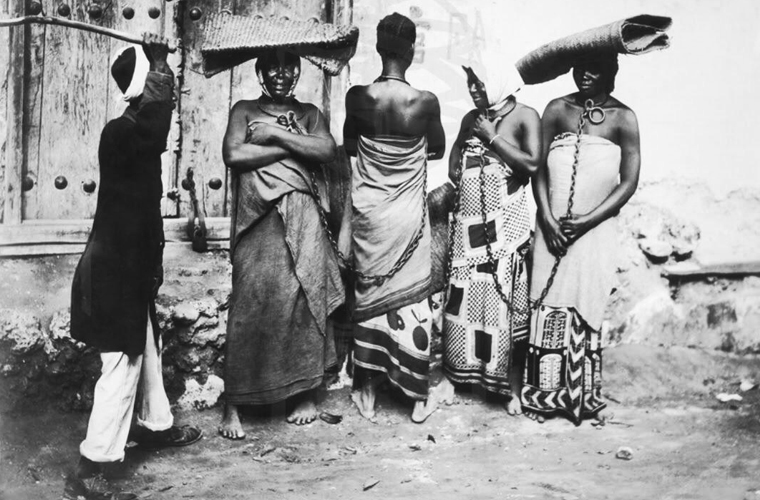The Transatlantic Slave Trade had three stages
STAGE 1
- Slave ships from Britain left ports like London, Liverpool, and Bristol for West Africa carrying goods such as cloth, guns, ironware, and drink that had been made in Britain.
- Later, on the West African coast, these goods would be traded for men, women, and children who had been captured by slave traders or bought from African chiefs.
STAGE 2
- African dealers kidnapped people from villages up to hundreds of miles inland. One of these people was Quobna Ottabah Cugoano who described in the autobiography how the slavers attacked with pistols and threatened to kill those who did not obey. They marched the captives to the coast where they would be traded for goods. The prisoners would be forced to march long distances, as Major Galan describes, with their hands tied behind their backs and their necks connected by wooden yokes.
- On the African coast, European traders bought enslaved peoples from traveling African dealers or nearby African chiefs. Families were separated.
- The traders held the enslaved Africans until a ship appeared, and then sold them to a European or African captain. It often took a long time for a captain to fill his ship. He rarely filled his ship in one spot. Instead, he would spend three to four months sailing along the coast, looking for the fittest and cheapest slaves.
- Ships would sail up and down the coast filling their holds with enslaved Africans. On the brutal ‘Middle Passage‘, enslaved Africans were densely packed onto ships that would carry them to the West Indies.
- There were many cases of violent resistance by Africans against slave ships and their crews. These included attacks from the shore by ‘free’ Africans against ships or longboats and many cases of shipboard revolt by slaves.
STAGE 3
- In the West Indies, enslaved Africans would be sold to the highest bidder at slave auctions.
- Once they had been bought, enslaved Africans worked for nothing on plantations.
- They belonged to the plantation owner, like any other possession, and had no rights at all. The enslaved Africans were often punished very harshly.
- Enslaved Africans resisted their enslavement in many ways, from revolution to silent, personal resistance. Some refused to be enslaved and took their own lives. Sometimes pregnant women preferred abortion to bringing a child into slavery.
- On the plantations, many enslaved Africans tried to slow down the pace of work by pretending to be ill, causing fires, or ‘accidentally’ breaking tools. Whenever possible, enslaved Africans ran away. Some escaped to South America, England, or North America. Also, there were hundreds of slave revolts.
- Two-thirds of the enslaved Africans, taken to the Americas, ended up on sugar plantations. Sugar was used to sweeten another crop harvested by enslaved Africans in the West Indies – coffee.
- With the money made from the sale of enslaved Africans, goods such as sugar, coffee, and tobacco were bought and carried back to Britain for sale. The ships were loaded with produce from the plantations for the voyage home.

